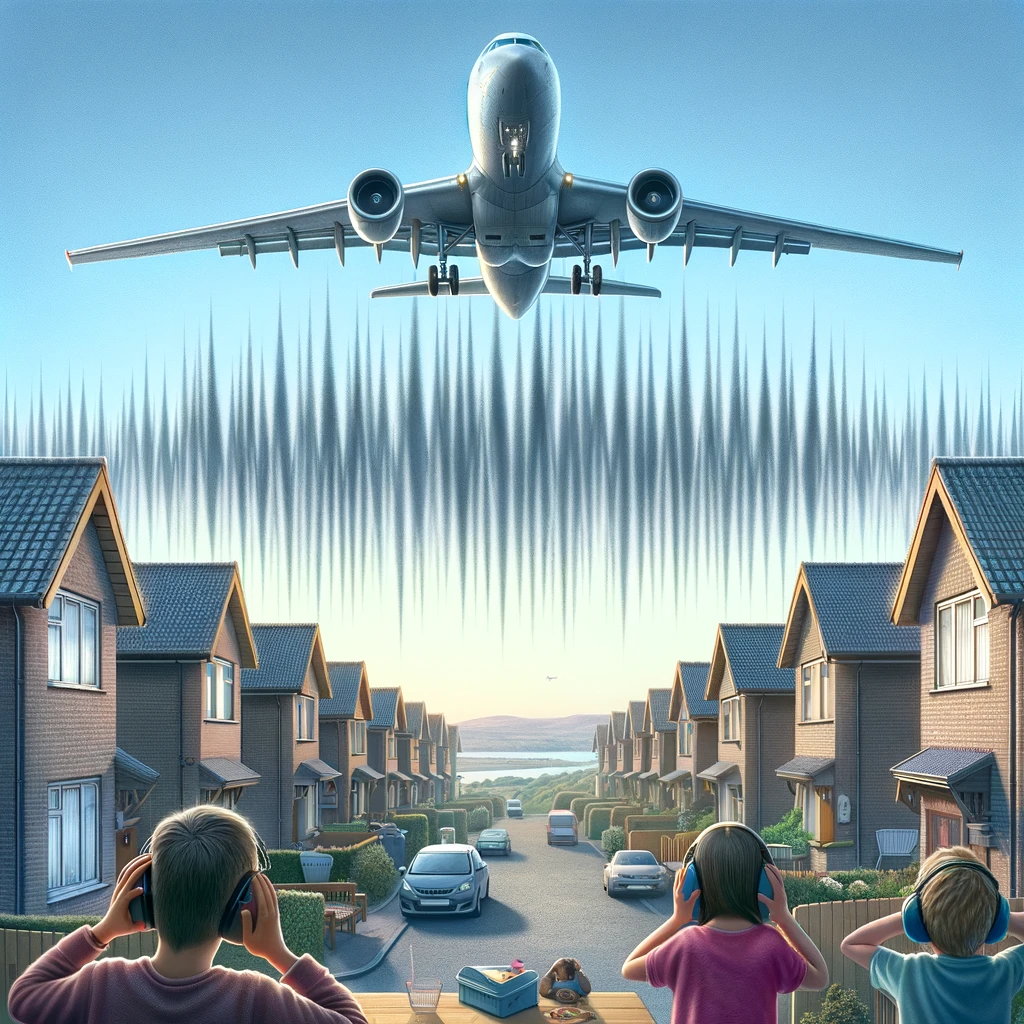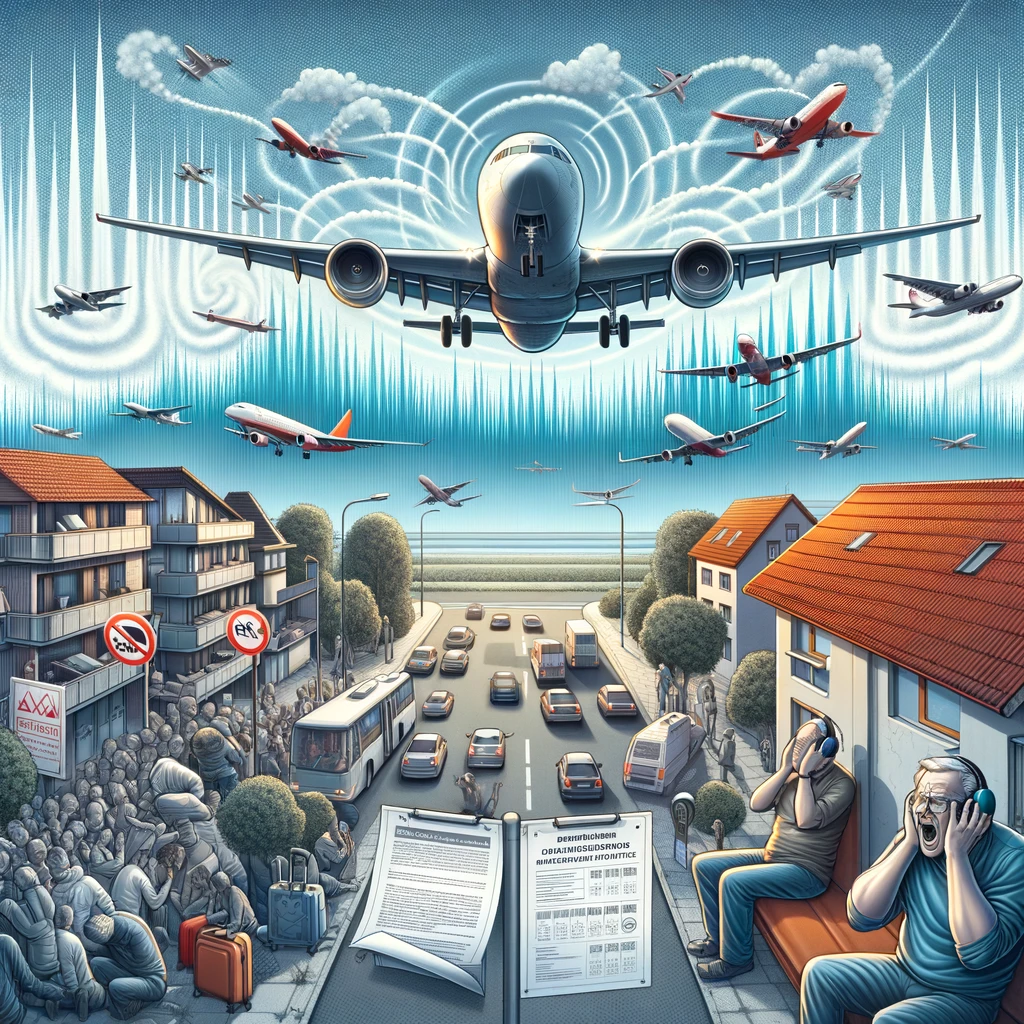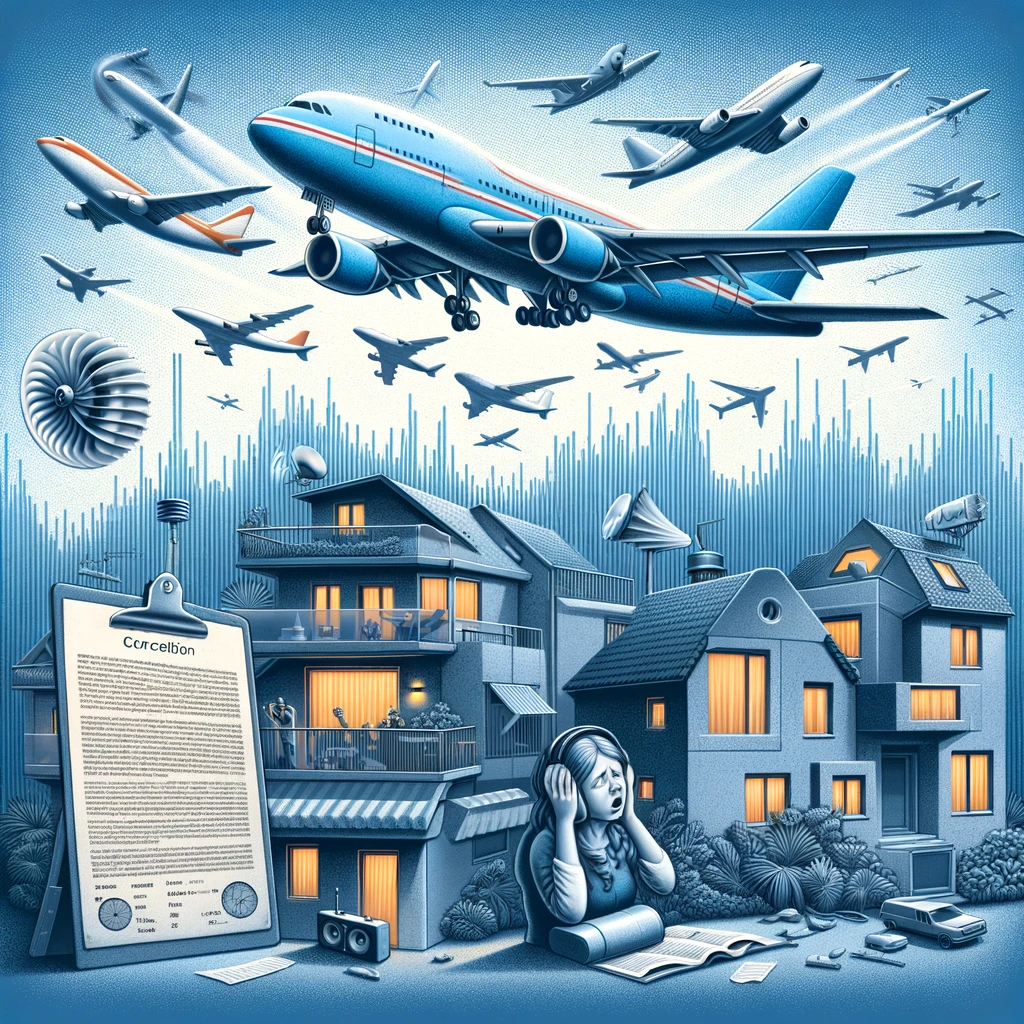The issue of aircraft noise, long a subject of legal and regulatory attention, continues to be a pertinent concern in the realm of contemporary aviation and air law. This noise, generated by aircraft engines and flight operations, is more than just an environmental nuisance; it poses significant challenges to communities living near airports and flight paths. As the aviation industry continues to grow, so does the impact of aircraft noise, making it a critical area of legal scrutiny and action.

The relevance of aircraft noise in air law is multifaceted. It involves balancing the expanding demands of the aviation sector with the rights of local communities and environmental considerations. This dynamic has led to the development of a complex legal framework, encompassing international regulations, national laws, and local ordinances, all aimed at managing and mitigating the effects of aircraft noise.
This article aims to provide a comprehensive overview of aircraft noise as a legal issue. It will show the historical context of noise regulation in aviation, examine the international and national legal frameworks that govern it, and explore the challenges and emerging trends in this field. By doing so, the article seeks to illuminate the intricate relationship between aviation advancement and legal efforts to minimize the environmental footprint of aircraft noise.
Historical Context of Aircraft Noise Regulation
The regulation of aircraft noise has evolved significantly since the early days of aviation. Initially, the issue received little attention, but as commercial air travel expanded post-World War II, so did awareness of the noise impact. This led to the initial developments in aircraft noise regulation, primarily at local and national levels. Over time, the need for a cohesive approach saw the evolution of international standards and practices, spearheaded by organizations like the International Civil Aviation Organization (ICAO).
Key milestones in legislation include the introduction of noise certification standards for new aircraft and the implementation of noise abatement procedures, marking crucial steps in the global effort to regulate and mitigate aircraft noise. These developments reflect an ongoing commitment to addressing the environmental and societal impacts of aviation noise.
International Legal Framework Governing Aircraft Noise
The International Civil Aviation Organization (ICAO) plays a pivotal role in shaping the international legal framework for aircraft noise regulation. As the specialized agency of the United Nations, ICAO is instrumental in establishing global noise standards. These standards, aimed at manufacturers and airlines, set benchmarks for aircraft noise levels to minimize the impact on surrounding communities. Furthermore, ICAO provides comprehensive guidelines for noise management, including land-use planning and operational restrictions, which are vital for mitigating the effects of aircraft noise at airports around the world.

In addition to ICAO’s initiatives, other international agreements and treaties significantly influence aircraft noise regulation. The Chicago Convention, for instance, lays the foundational principles of international air law, including aspects related to noise control. Under this convention, signatory states commit to collaborating on reducing noise pollution.
Additionally, various environmental protocols have emerged, addressing the broader environmental impacts of aviation, including noise. These protocols often encourage the adoption of greener technologies and quieter aircraft designs, demonstrating a global consensus on the importance of balancing aviation growth with environmental stewardship. Together, these international efforts create a cohesive legal structure that guides and governs the approach to aircraft noise worldwide.
National Laws and Regulations
National laws and regulations regarding aircraft noise vary significantly across countries, reflecting diverse approaches to addressing this environmental and public health concern. Each nation tailors its regulations to balance the growth of its aviation sector with the need to protect communities from excessive noise.

In the United States, the Federal Aviation Administration (FAA) oversees aircraft noise standards, implementing policies like the Airport Noise and Capacity Act of 1990. This Act emphasizes the reduction of airport noise through various measures, including the phasing out of older, noisier aircraft. In contrast, the European Union adopts a more centralized approach, with stringent noise regulations enforced by the European Aviation Safety Agency (EASA). The EU’s Environmental Noise Directive, for instance, focuses on mapping noise exposure and implementing action plans for noise management.
Other countries also contribute unique perspectives, with some employing more stringent regulations while others take a less rigorous stance. Enforcement mechanisms vary, ranging from fines and operational restrictions to incentives for using quieter aircraft. Compliance is typically monitored through noise monitoring systems and regular audits, ensuring adherence to national and international noise standards. These varied approaches underscore the global challenge of harmonizing aviation advancement with effective noise control.
Legal Challenges and Litigation
Legal challenges and litigation concerning aircraft noise often revolve around issues of environmental impact, property rights, and public health. Common legal grounds for challenging aircraft noise include nuisance claims, violation of environmental standards, and infringement on property values or enjoyment. These disputes can lead to significant legal cases, setting precedents in air law and influencing policy.
Several landmark cases have had a profound impact on the regulation of aircraft noise. For instance, judgments in cases like ‘Boeing Co. v. Movassaghi’ and ‘European Commission v. Finland’ have contributed to refining noise regulation and enforcement mechanisms. The outcomes of these cases often lead to stricter noise standards or enforcement policies.
The implications of these legal decisions extend beyond individual cases, influencing broader air law and policy. They prompt regulatory bodies to update or tighten noise regulations and push airlines and airports to adopt more noise-sensitive practices. Thus, litigation and legal challenges play a crucial role in shaping the evolving landscape of aircraft noise regulation.
Source:
European Commission
ICAO
FAA


